Beach Safety
To make your stay more enjoyable and fun here in Port Aransas follow this guide to help prevent yourself and your family against our marine life.
- Check the beach at the water line for any marine life that has washed ashore, please DO NOT TOUCH! They can still be venomous even though they are not in the water.
- If there are Jelly Fish or Man -O- War washed ashore, be careful when getting into the water, and try not to make contact with them.
- When walking in the water, shuffle your feet. This will frighten the stingray, causing it to move out of the way, and lessen your chance of stepping on them.

Also called the bluebottle, can be found in the Gulf of Mexico. The Man -O- War has a gas-filled chamber that is used like a sail to propel it through the water. The Man -O- War is iridescent blue, with long tentacles that can reach up 180 ft in length. The tentacles contain a poison, which causes the stinging sensation.

Their bodies are hemispherical in shape, that are tough and thick, white, milky, or bluish in color. Their tentacles are short and fused into a tight bundle that contains a poison that will also cause a stinging sensation.
- Immediately get away from the creature as they can sting many times.
- Protecting your hands with a towel scrape the tentacles and/or slimy deposits from the skin.
- Packing the area with wet sand, and then wash it away with water (repeat as needed) will also help remove the remnants of the jellyfish from your skin.
- Make a paste from Unseasoned Meat Tenderizer and rubbing alcohol, and then apply the mixture to the affected area. Unless affected area is the genital area, then use water to make the paste instead of rubbing alcohol.

Their bodies are hemispherical in shape, that are tough and thick, white, milky, or bluish in color. Their tentacles are short and fused into a tight bundle that contains a poison that will also cause a stinging sensation.
- Immediately immerse the affected area in hot water (104° F - 108° F) , as hot as you can tolerate, for at least 30 minutes. If you have a Betadine (iodine) solution, pour a little bit into the hot water, which will help disinfect the wound.
- Thoroughly examine the area to see if the barb has been broken off into the wound. If the barb did break off into the wound you must see a physician to have the barb removed. Go to you local physician or the local Emergency Room.
- The wound should be cleaned and bandaged. Many physicians recommend antibiotic therapy, as this type of puncture wound is highly susceptible to infection.
- Be sure to watch for infection at the site of puncture. Fever, redness running up away from the area, unusual amount of swelling, or pain that does not go away over a period of time. If these signs occur or you believe you may have an infection, go see a physician.
Both species of fish have poisonous barbed spines in their dorsal (top) and pectoral (side) fins.
If fins or barbed spines are impaled into skin, DO NOT REMOVE. Seek medical attention as soon as possible. These fins and spines must be surgically removed.
- Immerse the affected body part in hot water (104 ° F - 108° F), or as hot as you can tolerate.
- See physician for removal of barbs, wound cleaning, antibiotics and tetanus booster.
Stinging, burning, redness, mild pain, and swelling to the affected area.
If you have any one or more of the reactions call 911.
- Throbbing pain extending in extremities, muscle cramps
- Pale or blotchy looking skin
- Tightness in the chest, associated with respiratory difficulty
- Nausea and/or vomiting.
Daniel Johnson
Director / Paramedic
Phone: 361-749-4405
Tyler Casbeer
Paramedic
Phone: 361-749-4405
Albert Howie
Paramedic
Phone: 361-749-4405
Paul Jackson
Paramedic
Phone: 361-749-4405
Chris Morgan
Paramedic
Phone: 361-749-4405
Erika Sanders
Paramedic
Phone: 361-749-4405
Jarvis Sharp
EMT-Intermediate
Phone: 361-749-4405
John "Elliott" Tabor
Paramedic
Phone: 361-749-4405
Joe Torres
EMT-Basic
Phone: 361-749-4405
Brian Velandia
EMT-Intermediate
Phone: 361-749-4405
Joshua Veracruz
EMT-Basic
Phone: 361-749-4405
